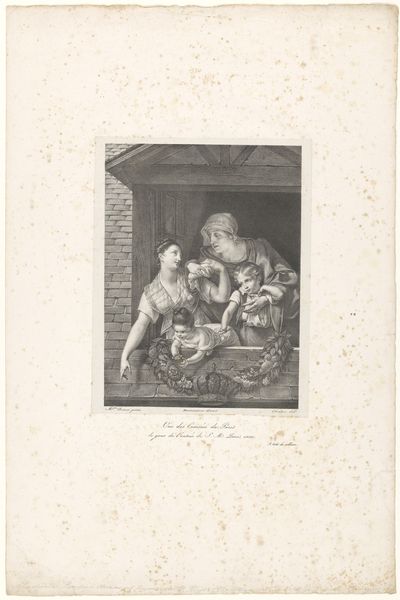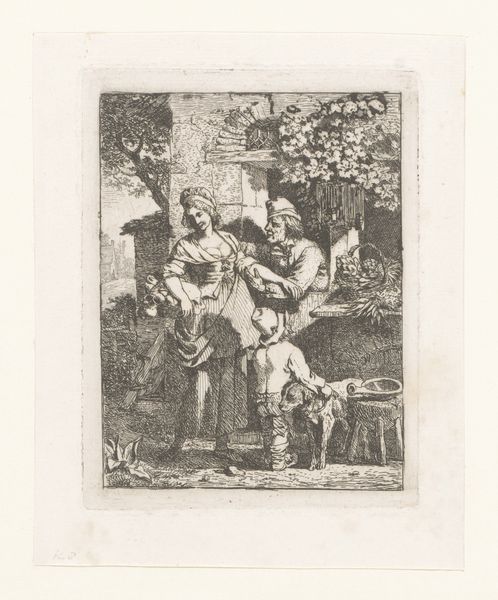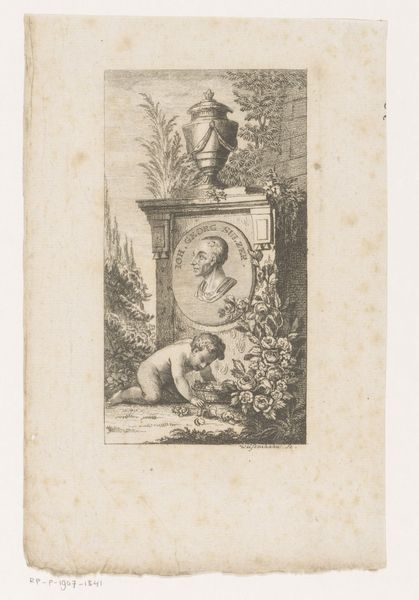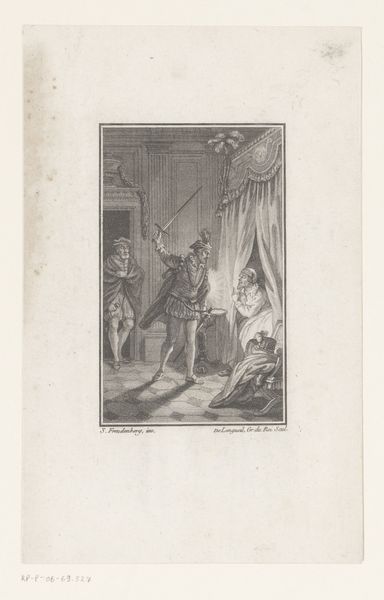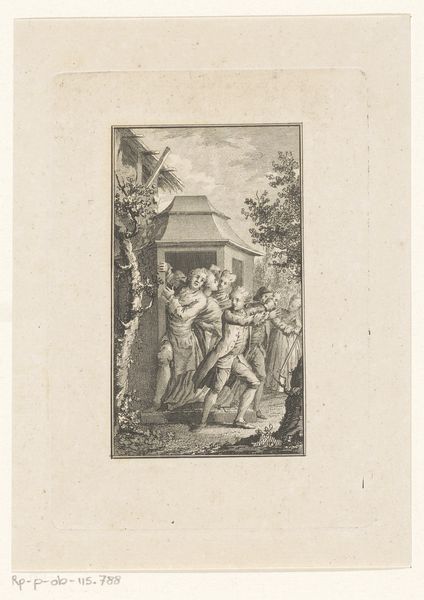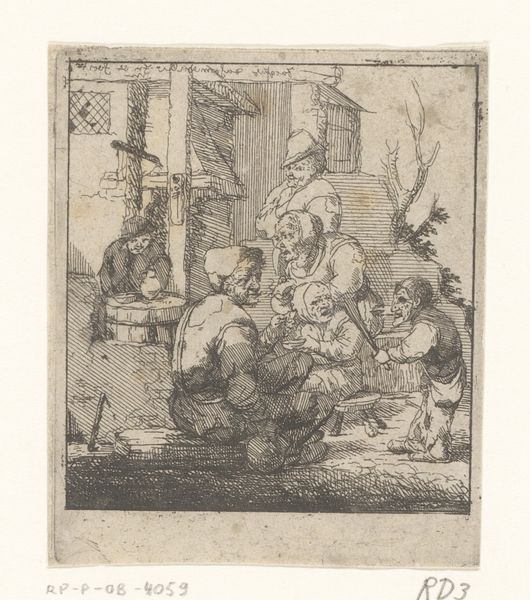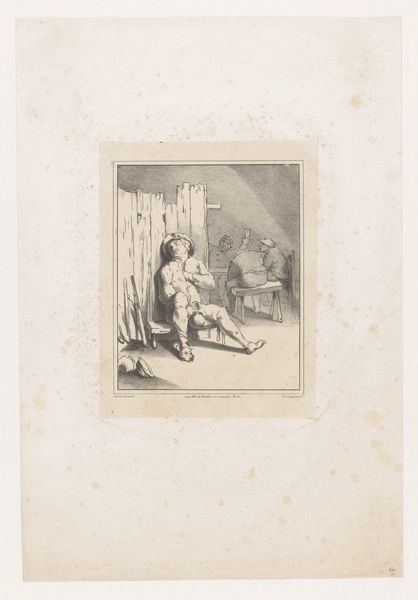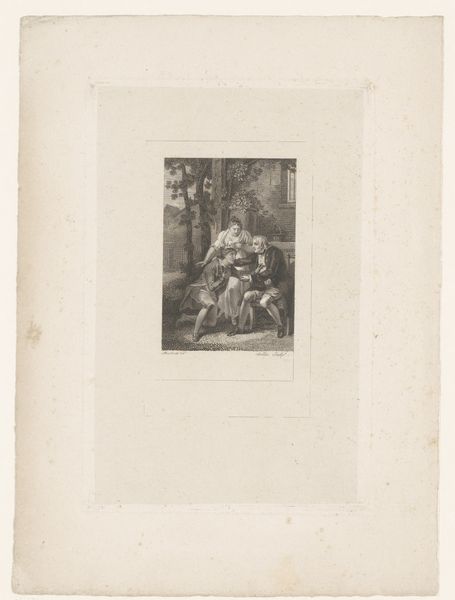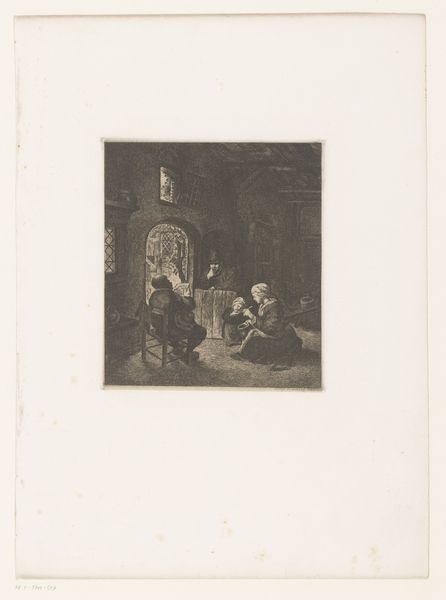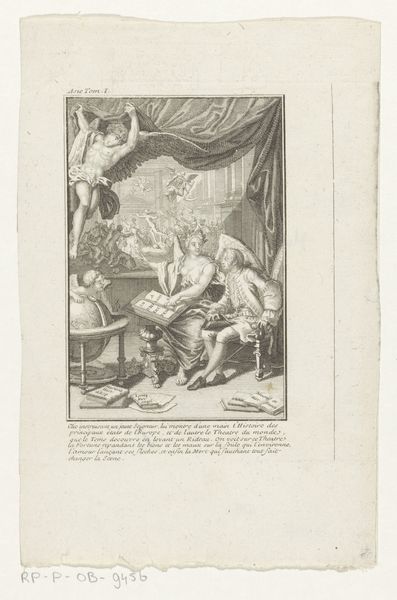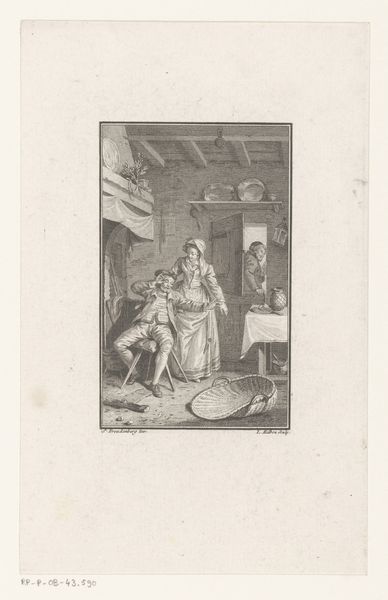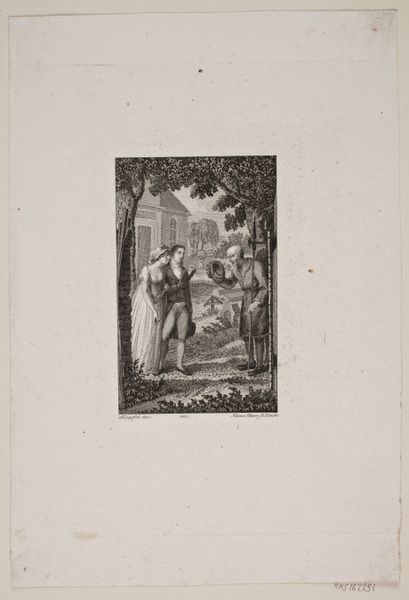
print, etching, engraving
portrait
allegory
narrative-art
baroque
etching
old engraving style
figuration
vanitas
history-painting
engraving
Dimensions: height 99 mm, width 73 mm
Copyright: Rijks Museum: Open Domain
Curator: Johann Franz Ermels, a German artist from the Baroque period, produced this engraving sometime between 1651 and 1693. It's titled, "Allegory of Transience". Editor: The mood is incredibly unsettling. There's a playful cherubic figure juxtaposed with...a literal skeleton enjoying an hourglass. The composition itself feels deliberately unbalanced, like a precariously stacked collection of anxieties. Curator: Indeed. Formally, we see the employment of a number of carefully arranged symbolic objects typical of the Vanitas tradition. Consider the skull, the extinguished candle held by the child, the wilting flowers, all speaking to the ephemeral nature of life. Editor: The engraving style itself lends to this feeling of decay. Those finely etched lines create a kind of fragile, web-like texture. You can almost feel the paper aging just by looking at it. There is a clock included to remind the audience of the brevity of life! Curator: Precisely. The technical execution directly enhances the subject matter. The cross-hatching creates depth, but it also contributes to the sense of unease. Observe the light falling across the youthful figure in stark contrast with the gloom of the skeletal presence in the background. Editor: And that cherub! What's with his detached stare? He looks more like he's pondering his tax returns than representing the joy of youth. I wonder what was on Johann’s mind! It does read as both dark humor, or rather sarcastic whimsy? Curator: The work functions on multiple levels. There's the moralistic lesson, certainly, but also a contemplation on beauty and its inevitable decline. These are classic meditations in the memento mori tradition. Editor: Maybe it's a dare to embrace life’s fleeting moments, like grabbing that hourglass alongside the skeleton. Live dangerously, and perhaps poke a bit of fun at how fleeting life is? Who wants to leave their legacy as an ode to being dour? I appreciate that sarcastic whimsy here! Curator: A valuable perspective. By examining the formal construction and the iconography present, we’ve perhaps managed to uncover layers of interpretation—from straightforward morality to something altogether more complex and personal. Editor: And hopefully encourage us to embrace living fully now because if we don't who knows? The skeleton dude looks like he’s ready to party but looks awfully alone for an afterlife rave.
Comments
No comments
Be the first to comment and join the conversation on the ultimate creative platform.
